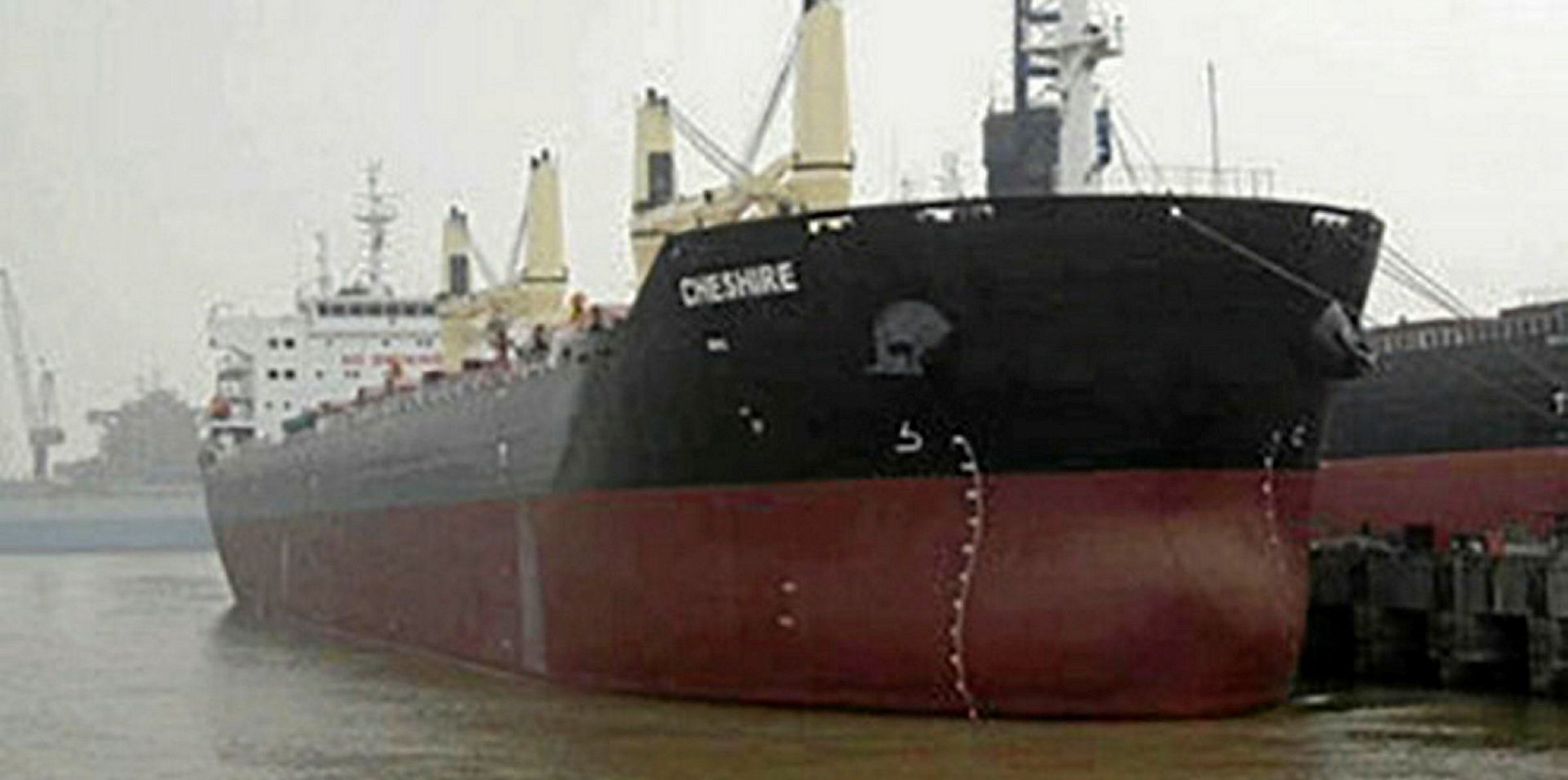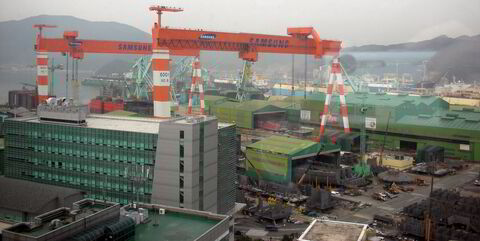The Bibby Line 57,000-dwt bulker Cheshire (built 2012) was so badly damaged by a fire involving an ammonium nitrate based fertiliser that underwriters have declared it a constructive total loss (CTL).
The decision was revealed in an Isle of Man accident investigation, which described the catastrophic damage and massive heat release caused by the blaze last August.
The report says that hull underwriters took the decision to declare the vessel a CTL at the turn of the year because “cost effective repairs could not be carried out”.
There is no indication of the insured value of the hull, but brokers put the market value at the time the vessel was lost at about $17.5m.
The gradual combustion of the Cheshire’s fertiliser cargo began just four days into a voyage from Norway to Thailand, which started on 6 August.
Just over a week later, in response to rising temperatures, toxic fumes and failure of attempts to cool the cargo, the master called for an evacuation of the vessel to be carried out by Spanish rescue services.
The Isle of Man report points out that IMO guidance indicates the transportation of nitrate fertiliser is safe if certain safeguards are carried out. The correct measures were followed but it was not enough to stop the fire.
The cargo carried on the Cheshire had also passed a safety test — known as the trough test — and was declared “non hazardous”.
Unequipped
The report states the Cheshire was not equipped to carry hazardous nitrate fertiliser cargoes or cope with the thermal decomposition that occurred.
The problem appears to have begun in cargo hold four early in the voyage but spread to all the cargo holds.
“As a result of the decomposition event in its entirety, the hull was structurally damaged beyond economical repair, requiring that the vessel be scrapped,” the Isle of Man investigator says in the report.
The probe says swift action is needed when a problem is found to prevent similar accidents from happening again. It adds that better detection methods should have been deployed.
“It is recommended that the IMO and marine industry together discuss the merits of introducing a requirement for thermographic determination, as an additional safeguard, to ensure that hotspots do not exist in cargo hold boundaries prior to loading any ammonium nitrate fertiliser cargoes,” the Isle of Man report says.



